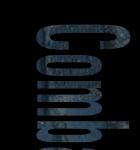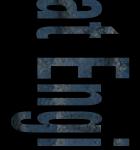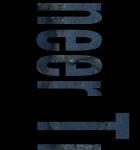



|
Photo Gallery
3
Courtesy of Classic
Military Vehicle magazine Issue 3 / volume 1
by David Fletcher |
|

Since CET has its rotating towing hook attached to what is normally
regarded as the front, it also has to tow in reverse. Here it is seen
during a demonstration at Aldershot with a Giant Viper mine clearing
trailer in tow. Giant Viper uses rockets to launch a 275 yards long hose
packed with plastic explosive across a minefield. Once it has fallen, the
charge is detonated, clearing a 20 ft wide path through anti personnel or
anti-tank mines over a distance of around 200 yards by sympathetic
detonation. In service, CET could have two of these or one of the big GKN
/ Sankey twin axis AVRE trailers. Like most modern armored vehicles, CET
has an air-conditioning system to regulate the temperature of the crew
compartment and filter out nuclear containmination.
|
 One
of the more unexpected fittings, seen here on one of the pilot vehicles at
the Mechanization Experimental Establishment in Chertsey, is the
special crane attachment that can be erected in the bucket. Powered by the
winch cable it can handle payloads up to 4 tons, and its seen here
dropping a demonstration load into a Thames Trader. Seven of these
prototypes were built, followed by 141 production machines, two other
functions, which are not illustrated, include a pusher bar, used when
launching pontoons or bridging units into a waterway and a facility to
detonate external demolition charges from within the vehicle. One
of the more unexpected fittings, seen here on one of the pilot vehicles at
the Mechanization Experimental Establishment in Chertsey, is the
special crane attachment that can be erected in the bucket. Powered by the
winch cable it can handle payloads up to 4 tons, and its seen here
dropping a demonstration load into a Thames Trader. Seven of these
prototypes were built, followed by 141 production machines, two other
functions, which are not illustrated, include a pusher bar, used when
launching pontoons or bridging units into a waterway and a facility to
detonate external demolition charges from within the vehicle.
|
|
 Once
again we see CET proceeding effectively in reverse; the manual gearbox
provides four speeds in either direction with a top forward road speed of
32 mph but the reverse ratios reduce the speeds by half which is more
suitable for earthmoving tasks. Power is provided by a Rolls-Royce C6TFR
turbocharged diesel, a six cylinder in line unit, and Rolls-Royce also
manufactures the steering system. In this photograph, the vehicle is again
moving with the bucket end leading, and is carrying a roll of steel track
way than can be release to unroll by setting off a small charge. CET is
capable of handling Class 30 and Class 60 track way which it unrolls by
pushing gently with its bucket. Since it weight no more than 18 tons, CET
exerts very low ground pressure and can move across ground which other
vehicles would bog, and for this reason it would be the obvious unit to
lay track way. Like many light weight armored vehicles of this
period CET is of welded construction using Aluminum armor developed by the
Alcan Company. Once
again we see CET proceeding effectively in reverse; the manual gearbox
provides four speeds in either direction with a top forward road speed of
32 mph but the reverse ratios reduce the speeds by half which is more
suitable for earthmoving tasks. Power is provided by a Rolls-Royce C6TFR
turbocharged diesel, a six cylinder in line unit, and Rolls-Royce also
manufactures the steering system. In this photograph, the vehicle is again
moving with the bucket end leading, and is carrying a roll of steel track
way than can be release to unroll by setting off a small charge. CET is
capable of handling Class 30 and Class 60 track way which it unrolls by
pushing gently with its bucket. Since it weight no more than 18 tons, CET
exerts very low ground pressure and can move across ground which other
vehicles would bog, and for this reason it would be the obvious unit to
lay track way. Like many light weight armored vehicles of this
period CET is of welded construction using Aluminum armor developed by the
Alcan Company.
|




 One
of the more unexpected fittings, seen here on one of the pilot vehicles at
the Mechanization Experimental Establishment in Chertsey, is the
special crane attachment that can be erected in the bucket. Powered by the
winch cable it can handle payloads up to 4 tons, and its seen here
dropping a demonstration load into a Thames Trader. Seven of these
prototypes were built, followed by 141 production machines, two other
functions, which are not illustrated, include a pusher bar, used when
launching pontoons or bridging units into a waterway and a facility to
detonate external demolition charges from within the vehicle.
One
of the more unexpected fittings, seen here on one of the pilot vehicles at
the Mechanization Experimental Establishment in Chertsey, is the
special crane attachment that can be erected in the bucket. Powered by the
winch cable it can handle payloads up to 4 tons, and its seen here
dropping a demonstration load into a Thames Trader. Seven of these
prototypes were built, followed by 141 production machines, two other
functions, which are not illustrated, include a pusher bar, used when
launching pontoons or bridging units into a waterway and a facility to
detonate external demolition charges from within the vehicle.